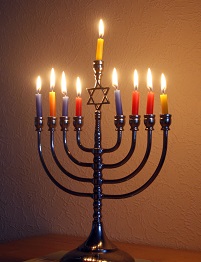The History Of Hanukkah
December 15, 2015
Have you ever wondered how Hanukkah became a holiday?
Hanukkah is a traditional holiday that features an eight-day Jewish celebration.
During 200 BC, Judea was ruled by Antiochus III, the king of Syria. He allowed Jews to practice their belief, but his son, Antiochus IV Epiphanes, banned the Jewish religion, forcing all Jews to worship Greek gods.
Then in 168 BC, Antiochus IV Epiphanes ordered his soldiers to enter Jerusalem and kill thousands of Jews, destroy temples, and sacrifice pigs to the Greek god, Zeus.
Mattathias and his five sons revolted against Antiochus IV Epiphanes and the Seleucid monarchy. Two years later, Mattathias’s sons, along with other Jews, drove all the Syrians out of Jerusalem.
Later, several Jews washed and rebuilt the altar of the Second Temple. They lighted a menorah, a sacred candelabrum with seven branches and candles that were used to represent knowledge and creation.
According to tradition, the Jews lit a menorah and were surprised by the result. They used a small amount of olive oil which kept the menorah burning for eight nights, far beyond what was expected. Later, because of this extraordinary miracle, they were encouraged to celebrate an annual eight-day festival.
Today, celebrators of Hanukkah light one candle on the menorah each day. There are nine available candle spaces, and the middle slot is called the Shamash. There are approximately fourteen million Jews who celebrate Hanukkah each year.






